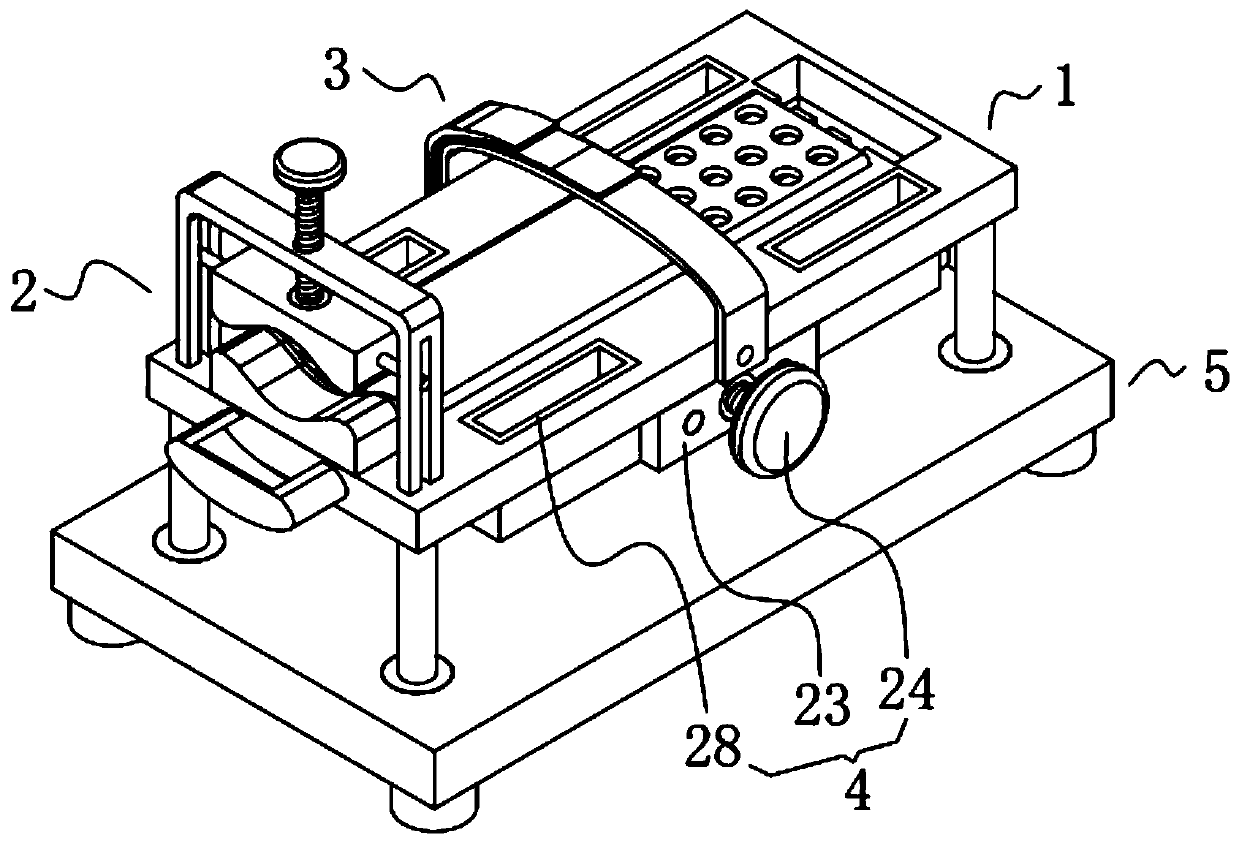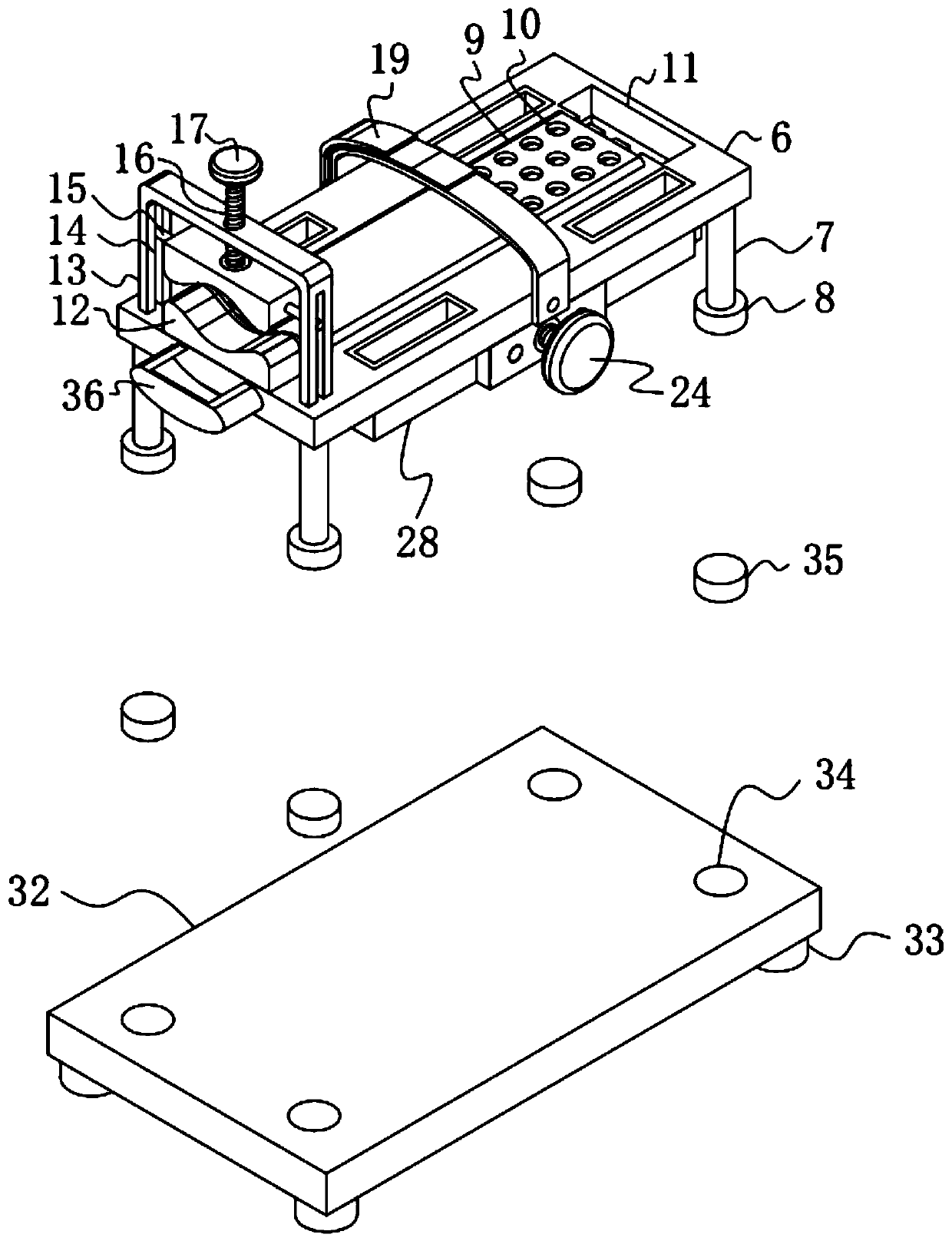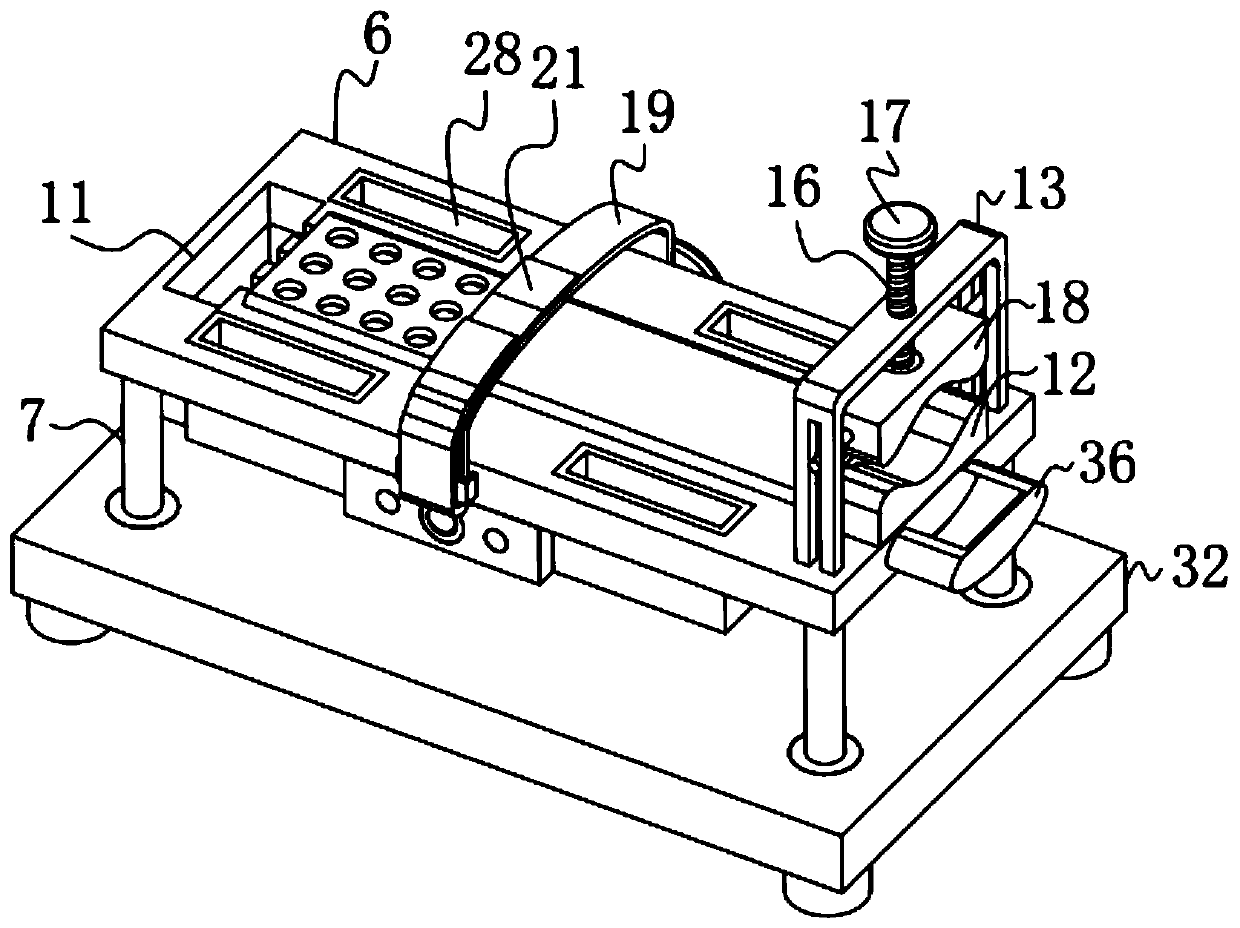Mouse fixing device for epilepsy research experiments
A fixed device and experimental technology, applied in veterinary instruments, medical science, and animal restraint instruments, etc., can solve the problems of poor safety performance, poor mouse immobilization effect, and small application range, and achieve the effect of preventing rats from escaping and immobilizing Good, wide range of effects
- Summary
- Abstract
- Description
- Claims
- Application Information
AI Technical Summary
Problems solved by technology
Method used
Image
Examples
Embodiment 1
[0055] A mouse immobilization device for epilepsy research experiments, such as figure 1 As shown, it includes a fixed platform 1, a head fixed unit 2, a spine fixed unit 3, a limb fixed unit 4 and a bottom support unit 5. The fixed platform 1 is detachably installed on the top of the bottom support unit 5, and the The head fixation unit 2 is installed on the upper side of the fixed platform 1, the spine fixation unit 3 is installed in the upper middle of the fixed platform 1, and the limb fixation unit 4 is installed on the bottom of the fixed platform 1 .
[0056] By adopting the above-mentioned technical scheme, the bottom supporting unit 5 is used to support the whole device, the head fixing unit 2 is used to fix the head of the mouse, the limb fixing unit 4 is used to fix the limbs of the mouse, and the spine fixing unit 3 is used to fix the mouse's limbs. The back of the spine, the above makes the effect of immobilizing the mice better, which can prevent the mice from e...
Embodiment 2
[0076] The difference from Example 1 is that the surface of the base 32 and the support platform 6 is also provided with a protective layer, and the protective layer is prepared by the following method:
[0077] Take the following raw materials and weigh them by weight: 25 parts of epoxy resin, 10 parts of titanium dioxide powder, 10 parts of natural rubber particles, 10 parts of phenolic resin, 8 parts of mica powder, 15 parts of polyurethane, 3 parts of paraffin wax, 2 parts of alcohol ester twelve , 2 parts of triethanolamine, 2 parts of emulsified silicone oil and 30 parts of water;
[0078] S1. Add the weighed paraffin wax, alcohol ester dodeca, triethanolamine, emulsified silicone oil and water into the mixer and stir for 20min at a stirring speed of 600r / min to prepare a mixed solution;
[0079] S2, adding epoxy resin, titanium dioxide powder, natural rubber particles, phenolic resin, mica powder and polyurethane into a pulverizer for pulverization, until the particle d...
Embodiment 3
[0085] The difference with embodiment 2 is the preparation of protective layer, and its specific preparation method is as follows:
[0086] Take the following raw materials and weigh them by weight: 30 parts of epoxy resin, 12 parts of titanium dioxide powder, 11 parts of natural rubber particles, 12 parts of phenolic resin, 9 parts of mica powder, 17 parts of polyurethane, 4 parts of paraffin wax, 3 parts of alcohol ester twelve , 3 parts of triethanolamine, 3 parts of emulsified silicone oil and 40 parts of water;
[0087] S1. Add the weighed paraffin, alcohol ester dodeca, triethanolamine, emulsified silicone oil and water into the mixer and stir for 25min at a stirring speed of 700r / min to prepare a mixed solution;
[0088] S2, adding epoxy resin, titanium dioxide powder, natural rubber particles, phenolic resin, mica powder and polyurethane into a pulverizer for pulverization, until the particle diameter of the material is not greater than 100nm, and a mixed powder materi...
PUM
 Login to View More
Login to View More Abstract
Description
Claims
Application Information
 Login to View More
Login to View More - R&D
- Intellectual Property
- Life Sciences
- Materials
- Tech Scout
- Unparalleled Data Quality
- Higher Quality Content
- 60% Fewer Hallucinations
Browse by: Latest US Patents, China's latest patents, Technical Efficacy Thesaurus, Application Domain, Technology Topic, Popular Technical Reports.
© 2025 PatSnap. All rights reserved.Legal|Privacy policy|Modern Slavery Act Transparency Statement|Sitemap|About US| Contact US: help@patsnap.com



